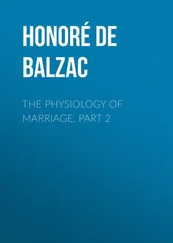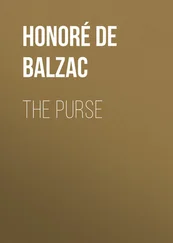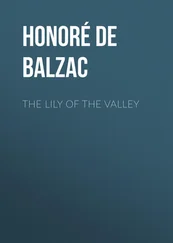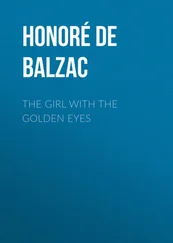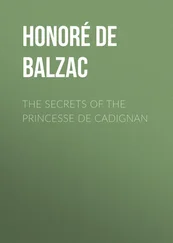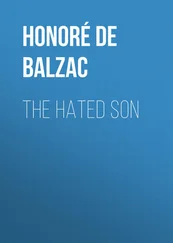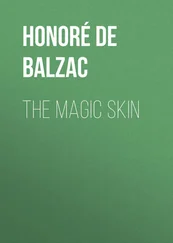Honoré Balzac - The Muse of the Department
Здесь есть возможность читать онлайн «Honoré Balzac - The Muse of the Department» — ознакомительный отрывок электронной книги совершенно бесплатно, а после прочтения отрывка купить полную версию. В некоторых случаях можно слушать аудио, скачать через торрент в формате fb2 и присутствует краткое содержание. Жанр: literature_19, foreign_antique, foreign_prose, на английском языке. Описание произведения, (предисловие) а так же отзывы посетителей доступны на портале библиотеки ЛибКат.
- Название:The Muse of the Department
- Автор:
- Жанр:
- Год:неизвестен
- ISBN:нет данных
- Рейтинг книги:4 / 5. Голосов: 1
-
Избранное:Добавить в избранное
- Отзывы:
-
Ваша оценка:
- 80
- 1
- 2
- 3
- 4
- 5
The Muse of the Department: краткое содержание, описание и аннотация
Предлагаем к чтению аннотацию, описание, краткое содержание или предисловие (зависит от того, что написал сам автор книги «The Muse of the Department»). Если вы не нашли необходимую информацию о книге — напишите в комментариях, мы постараемся отыскать её.
The Muse of the Department — читать онлайн ознакомительный отрывок
Ниже представлен текст книги, разбитый по страницам. Система сохранения места последней прочитанной страницы, позволяет с удобством читать онлайн бесплатно книгу «The Muse of the Department», без необходимости каждый раз заново искать на чём Вы остановились. Поставьте закладку, и сможете в любой момент перейти на страницу, на которой закончили чтение.
Интервал:
Закладка:
Honoré de Balzac
The Muse of the Department
DEDICATION
To Monsieur le Comte Ferdinand de Gramont.
MY DEAR FERDINAND, – If the chances of the world of literature — habent sua fata libelli – should allow these lines to be an enduring record, that will still be but a trifle in return for the trouble you have taken – you, the Hozier, the Cherin, the King-at-Arms of these Studies of Life; you, to whom the Navarreins, Cadignans, Langeais, Blamont-Chauvrys, Chaulieus, Arthez, Esgrignons, Mortsaufs, Valois – the hundred great names that form the Aristocracy of the “Human Comedy” owe their lordly mottoes and ingenious armorial bearings. Indeed, “the Armorial of the Etudes, devised by Ferdinand de Gramont, gentleman,” is a complete manual of French Heraldry, in which nothing is forgotten, not even the arms of the Empire, and I shall preserve it as a monument of friendship and of Benedictine patience. What profound knowledge of the old feudal spirit is to be seen in the motto of the Beauseants, Pulchre sedens, melius agens ; in that of the Espards, Des partem leonis ; in that of the Vandenesses, Ne se vend . And what elegance in the thousand details of the learned symbolism which will always show how far accuracy has been carried in my work, to which you, the poet, have contributed.
Your old friend, DE BALZAC.THE MUSE OF THE DEPARTMENT
On the skirts of Le Berry stands a town which, watered by the Loire, infallibly attracts the traveler’s eye. Sancerre crowns the topmost height of a chain of hills, the last of the range that gives variety to the Nivernais. The Loire floods the flats at the foot of these slopes, leaving a yellow alluvium that is extremely fertile, excepting in those places where it has deluged them with sand and destroyed them forever, by one of those terrible risings which are also incidental to the Vistula – the Loire of the northern coast.
The hill on which the houses of Sancerre are grouped is so far from the river that the little river-port of Saint-Thibault thrives on the life of Sancerre. There wine is shipped and oak staves are landed, with all the produce brought from the upper and lower Loire. At the period when this story begins the suspension bridges at Cosne and at Saint-Thibault were already built. Travelers from Paris to Sancerre by the southern road were no longer ferried across the river from Cosne to Saint-Thibault; and this of itself is enough to show that the great cross-shuffle of 1830 was a thing of the past, for the House of Orleans has always had a care for substantial improvements, though somewhat after the fashion of a husband who makes his wife presents out of her marriage portion.
Excepting that part of Sancerre which occupies the little plateau, the streets are more or less steep, and the town is surrounded by slopes known as the Great Ramparts, a name which shows that they are the highroads of the place.
Outside the ramparts lies a belt of vineyards. Wine forms the chief industry and the most important trade of the country, which yields several vintages of high-class wine full of aroma, and so nearly resembling the wines of Burgundy, that the vulgar palate is deceived. So Sancerre finds in the wineshops of Paris the quick market indispensable for liquor that will not keep for more than seven or eight years. Below the town lie a few villages, Fontenoy and Saint-Satur, almost suburbs, reminding us by their situation of the smiling vineyards about Neuchatel in Switzerland.
The town still bears much of its ancient aspect; the streets are narrow and paved with pebbles carted up from the Loire. Some old houses are to be seen there. The citadel, a relic of military power and feudal times, stood one of the most terrible sieges of our religious wars, when French Calvinists far outdid the ferocious Cameronians of Walter Scott’s tales.
The town of Sancerre, rich in its greater past, but widowed now of its military importance, is doomed to an even less glorious future, for the course of trade lies on the right bank of the Loire. The sketch here given shows that Sancerre will be left more and more lonely in spite of the two bridges connecting it with Cosne.
Sancerre, the pride of the left bank, numbers three thousand five hundred inhabitants at most, while at Cosne there are now more than six thousand. Within half a century the part played by these two towns standing opposite each other has been reversed. The advantage of situation, however, remains with the historic town, whence the view on every side is perfectly enchanting, where the air is deliciously pure, the vegetation splendid, and the residents, in harmony with nature, are friendly souls, good fellows, and devoid of Puritanism, though two-thirds of the population are Calvinists. Under such conditions, though there are the usual disadvantages of life in a small town, and each one lives under the officious eye which makes private life almost a public concern, on the other hand, the spirit of township – a sort of patriotism, which cannot indeed take the place of a love of home – flourishes triumphantly.
Thus the town of Sancerre is exceedingly proud of having given birth to one of the glories of modern medicine, Horace Bianchon, and to an author of secondary rank, Etienne Lousteau, one of our most successful journalists. The district included under the municipality of Sancerre, distressed at finding itself practically ruled by seven or eight large landowners, the wire-pullers of the elections, tried to shake off the electoral yoke of a creed which had reduced it to a rotten borough. This little conspiracy, plotted by a handful of men whose vanity was provoked, failed through the jealousy which the elevation of one of them, as the inevitable result, roused in the breasts of the others. This result showed the radical defect of the scheme, and the remedy then suggested was to rally round a champion at the next election, in the person of one of the two men who so gloriously represented Sancerre in Paris circles.
This idea was extraordinarily advanced for the provinces, for since 1830 the nomination of parochial dignitaries has increased so greatly that real statesmen are becoming rare indeed in the lower chamber.
In point of fact, this plan, of very doubtful outcome, was hatched in the brain of the Superior Woman of the borough, dux femina fasti , but with a view to personal interest. This idea was so widely rooted in this lady’s past life, and so entirely comprehended her future prospects, that it can scarcely be understood without some sketch of her antecedent career.
Sancerre at that time could boast of a Superior Woman, long misprized indeed, but now, about 1836, enjoying a pretty extensive local reputation. This, too, was the period at which two Sancerrois in Paris were attaining, each in his own line, to the highest degree of glory for one, and of fashion for the other. Etienne Lousteau, a writer in reviews, signed his name to contributions to a paper that had eight thousand subscribers; and Bianchon, already chief physician to a hospital, Officer of the Legion of Honor, and member of the Academy of Sciences, had just been made a professor.
If it were not that the word would to many readers seem to imply a degree of blame, it might be said that George Sand created Sandism , so true is it that, morally speaking, all good has a reverse of evil. This leprosy of sentimentality would have been charming. Still, Sandism has its good side, in that the woman attacked by it bases her assumption of superiority on feelings scorned; she is a blue-stocking of sentiment; and she is rather less of a bore, love to some extent neutralizing literature. The most conspicuous result of George Sand’s celebrity was to elicit the fact that France has a perfectly enormous number of superior women, who have, however, till now been so generous as to leave the field to the Marechal de Saxe’s granddaughter.
Читать дальшеИнтервал:
Закладка:
Похожие книги на «The Muse of the Department»
Представляем Вашему вниманию похожие книги на «The Muse of the Department» списком для выбора. Мы отобрали схожую по названию и смыслу литературу в надежде предоставить читателям больше вариантов отыскать новые, интересные, ещё непрочитанные произведения.
Обсуждение, отзывы о книге «The Muse of the Department» и просто собственные мнения читателей. Оставьте ваши комментарии, напишите, что Вы думаете о произведении, его смысле или главных героях. Укажите что конкретно понравилось, а что нет, и почему Вы так считаете.


